
[115] Dendrocopos major, Great Spotted Woodpecker
Picus viridis, Green Woodpecker
Introduction
Dendroocopos major, the Great Spotted Woodpecker, and Picus viridis, the Green Woodpecker, are the two common woodpeckers seen or heard in Britain. They are very different in appearance and habits.
Taxonomy
Kingdom – Animals
Phylum – Chordates
Class – Aves (Birds)
Order – Piciformes (Woodpeckers, toucans and others)
Infraorder – Picides (Woodpeckers and others)
Family – Picidae (Woodpeckers, wrynecks and others)
Subfamily – Picinae (Woodpeckers)
Tribe – Melanerpini (Pied Woodpeckers)
Genus – Dendrocopos
Scientific Name – Dendrocopos major, Great Spotted Woodpecker
Picus viridis, Green Woodpecker, is in the tribe Picini
Name
The Great Spotted Woodpecker probably derives the prefix ‘Great’ by comparison with the Lesser Spotted Woodpecker, which until very recently was another Dendrocopos species. (See below)
Dendrocopos comes from Greek roots dendron and kopos meaning ‘tree striking.’
Picus is Latin for woodpecker and viridis means green.
Great Spotted Woodpecker
The true woodpeckers, Picinae, exclude the related groups of Wrynecks and Piculets. Within Picinae there are two major tribes (and some others) and we have one representative from either tribe in the UK.
Dendrocopos major is from Melanerpini, which can be called the Pied Woodpeckers. For this species, that is quite a loose definition of ‘pied’ and its also quite a loose definition of ‘spotted.’ You could call it a vivid pattern of black and white but in good sunlight the black portions are actually a glossy dark blue. The vent area is red.
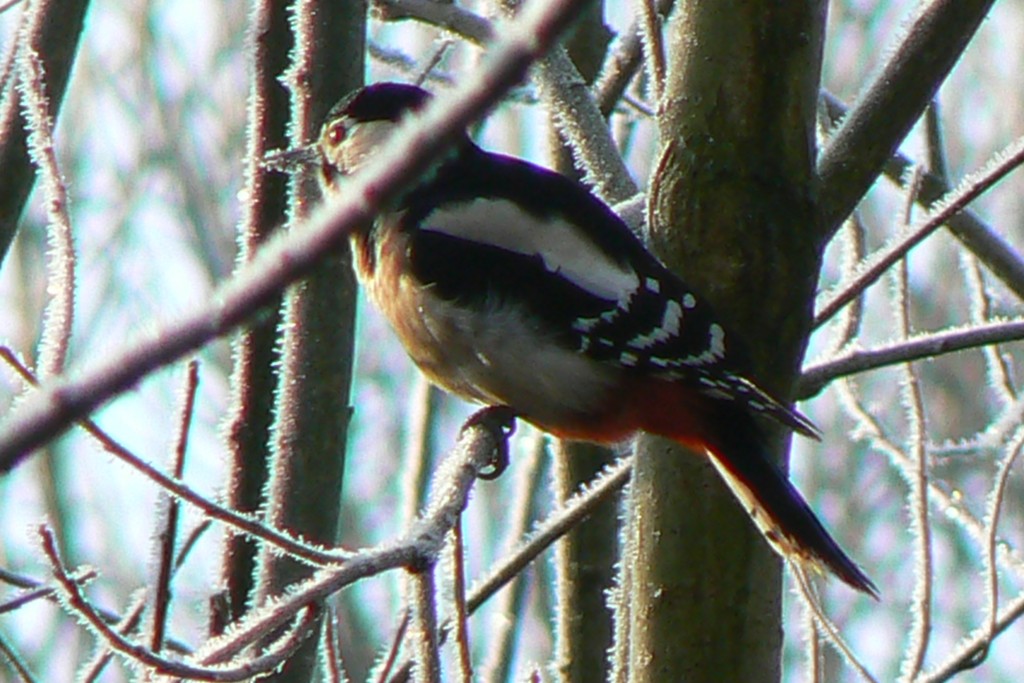

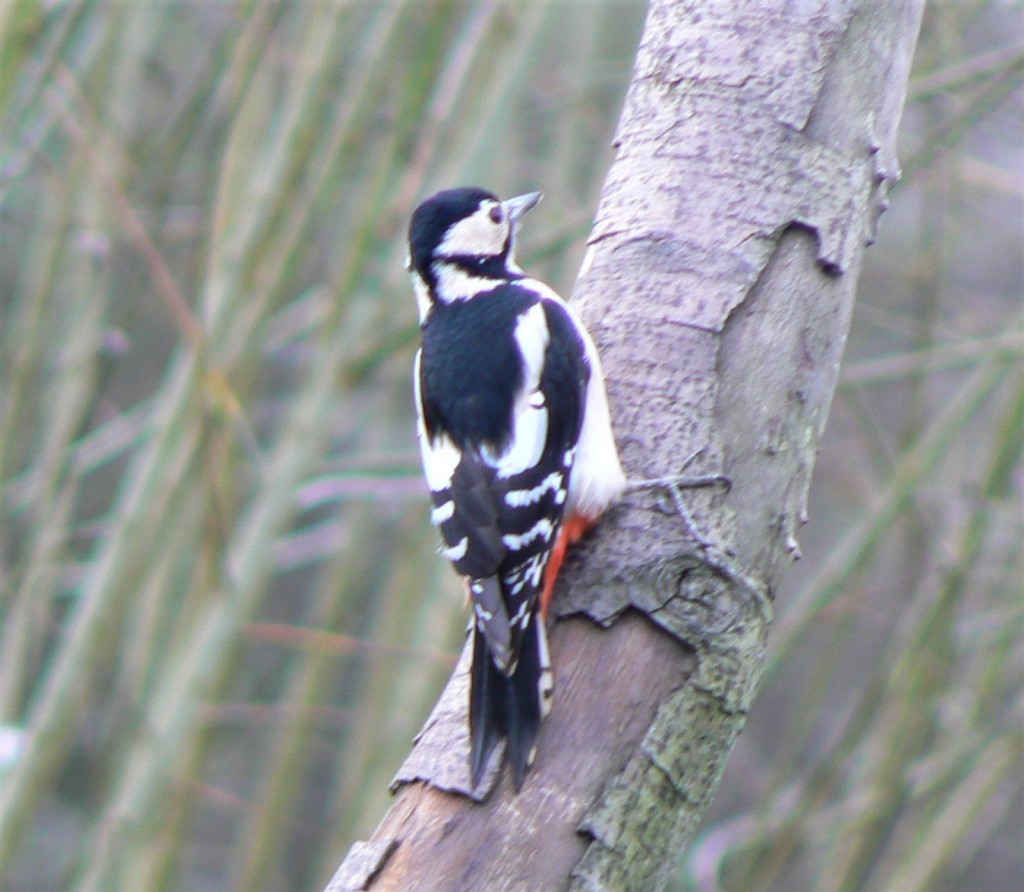
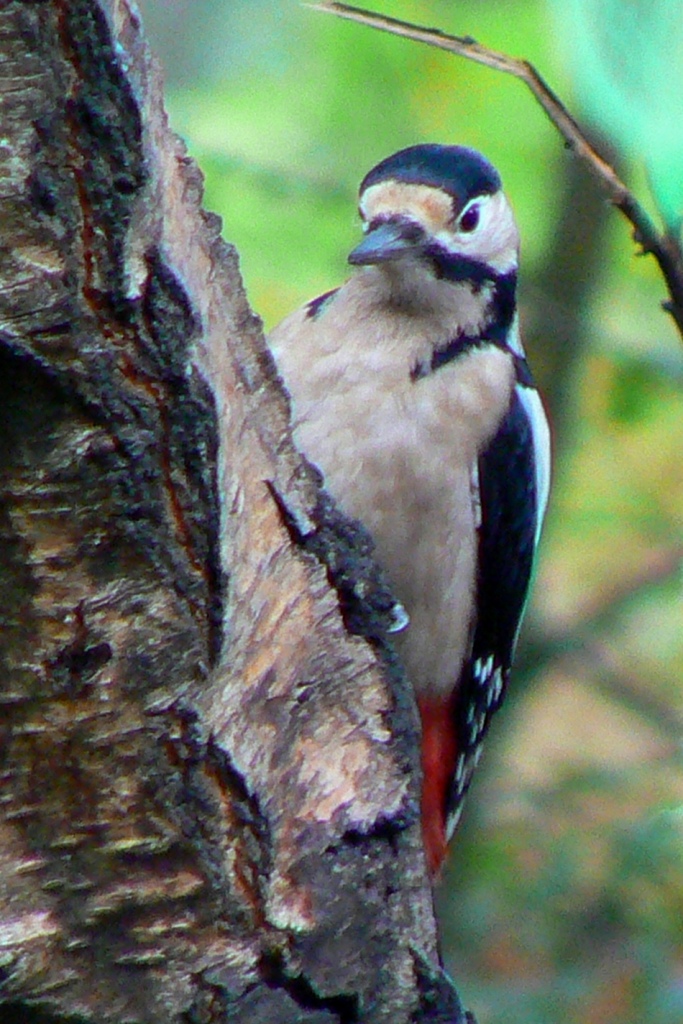

The males have additional red markings on the nape of the neck.

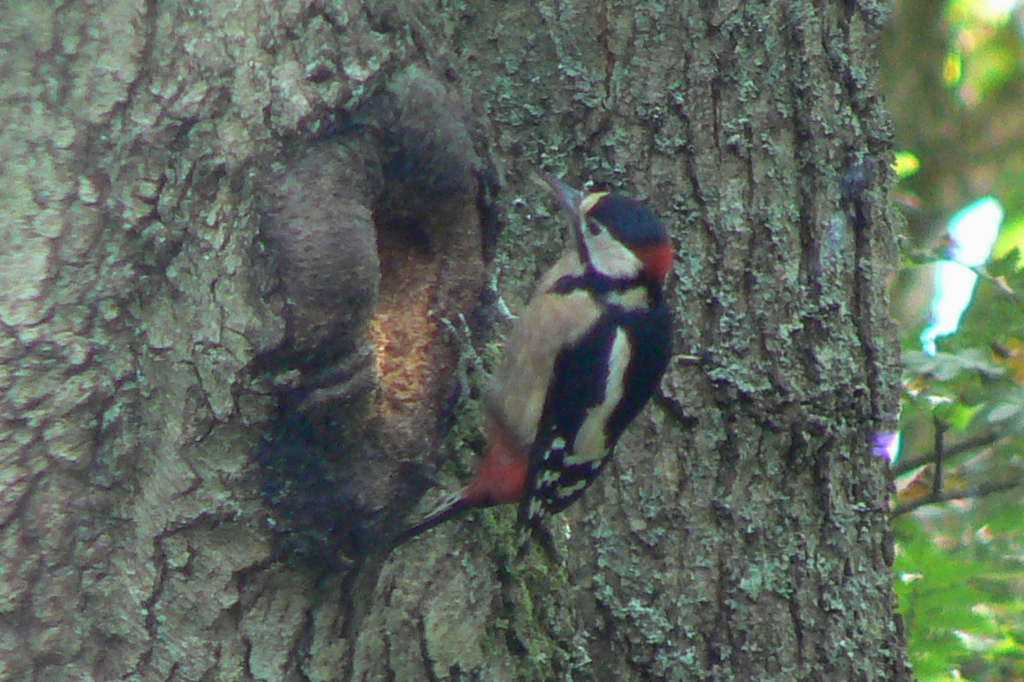
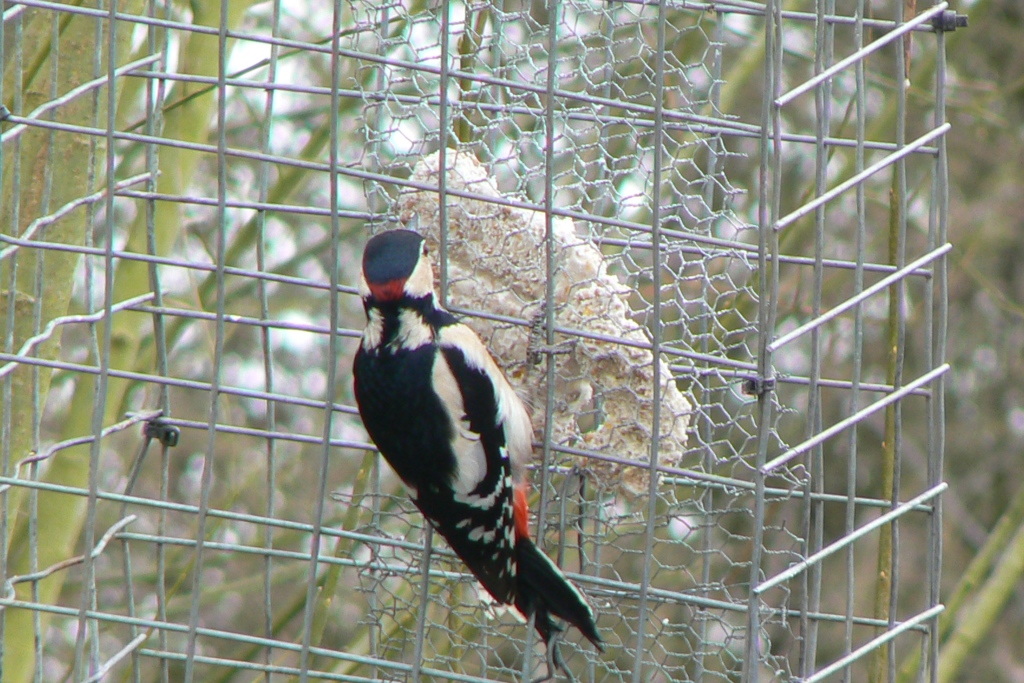
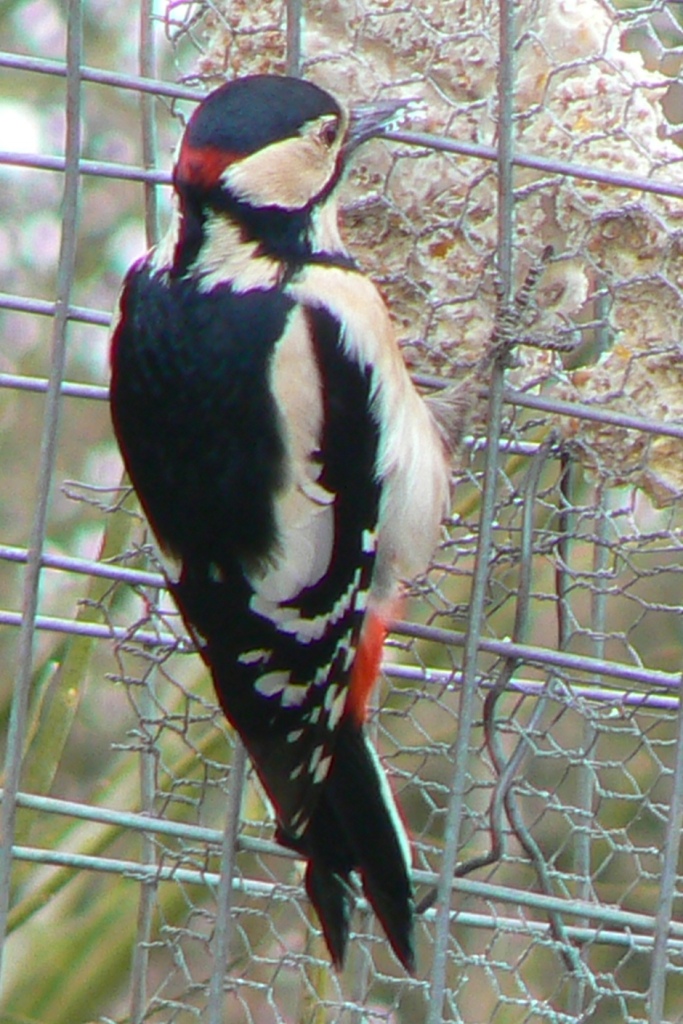


Juvenile birds have red on the top of the head.


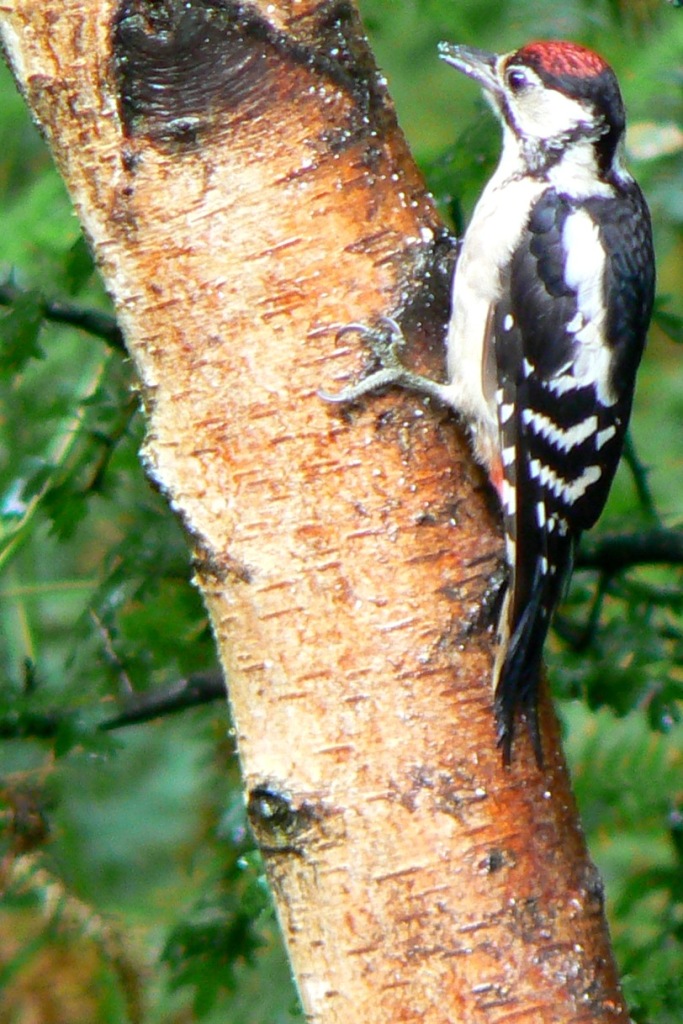
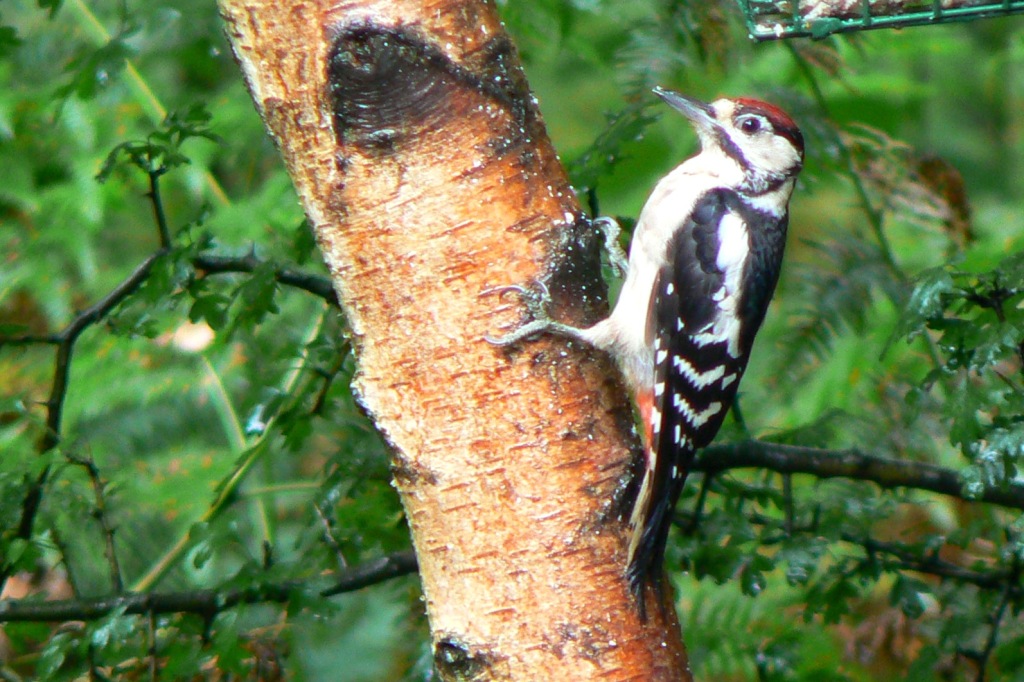
Dendrocopos major is common over all of Europe and much of Asia, and can be found in woodland, parks and gardens. It spends most of its life in trees. In common with most woodpeckers it has two forward facing and two backward toes. (Most birds have three toes pointing forward and one backwards.)
They eat a variety of foods including seeds extracted from pine cones and nuts. They dig into trees to find and extract insect larvae, and nest in holes created in trees.
They do have vocal noises but are most often heard drumming by striking a tree with their bills about a dozen times a second. The skull is specially structured to protect them from the forces involved in drumming.
In rural locations or within towns near trees, they will feed from bird feeders, particularly for peanuts. They always take priority over garden birds, which will wait for the woodpecker to finish.
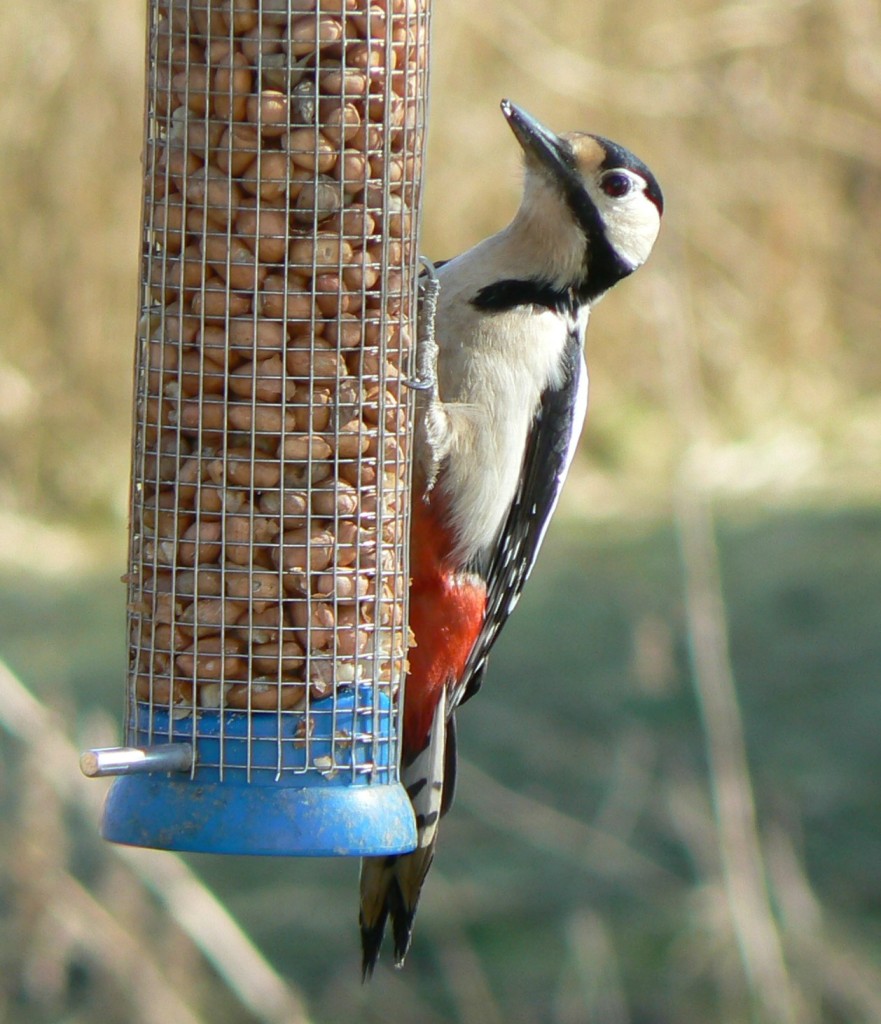
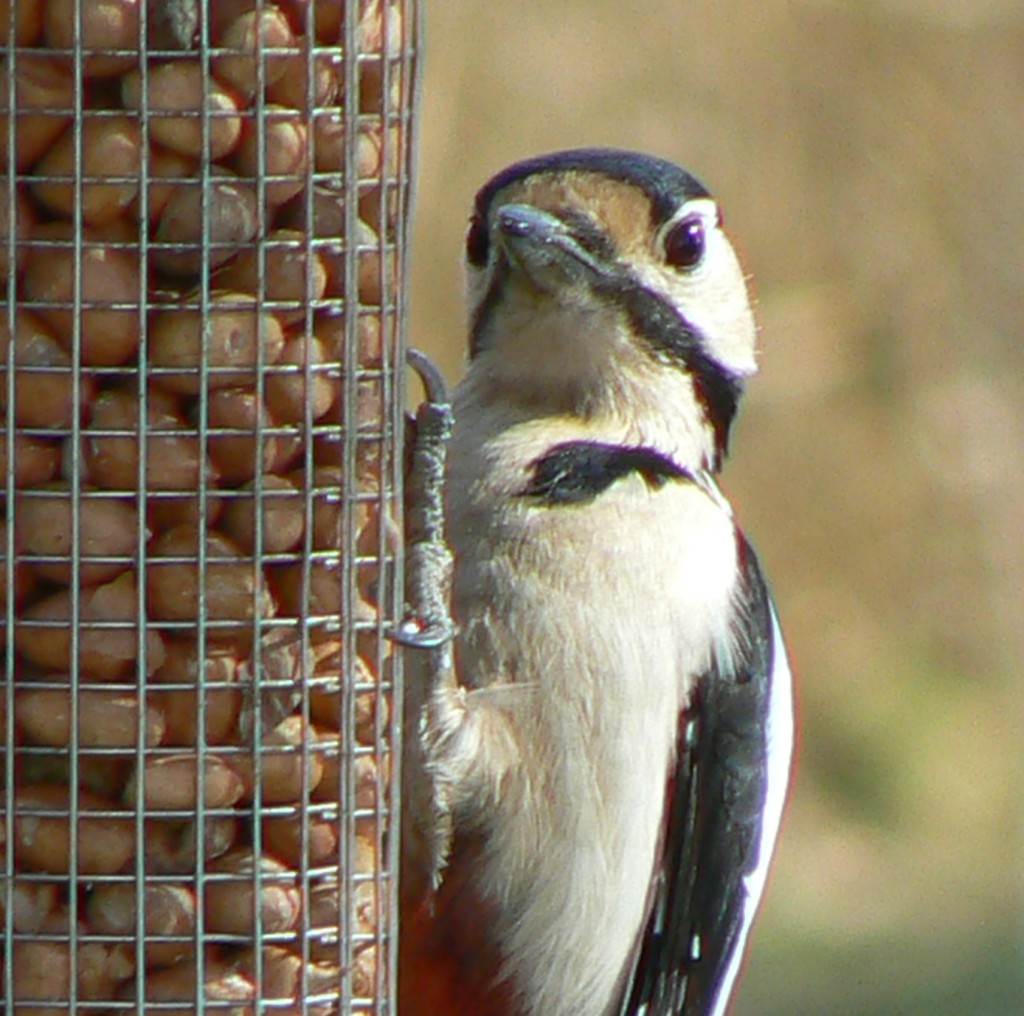
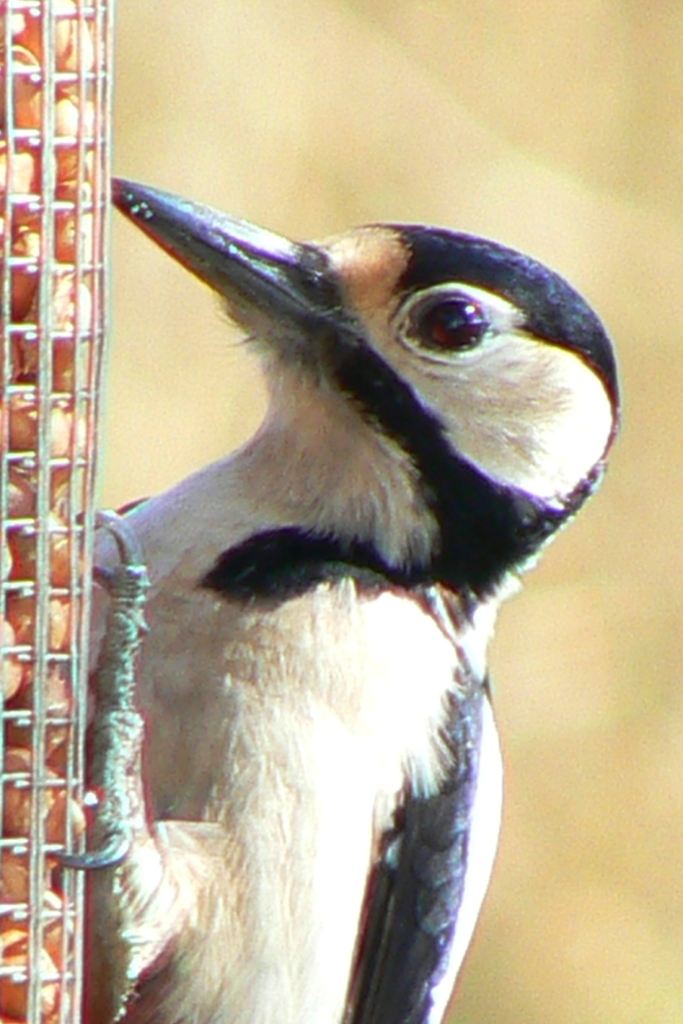
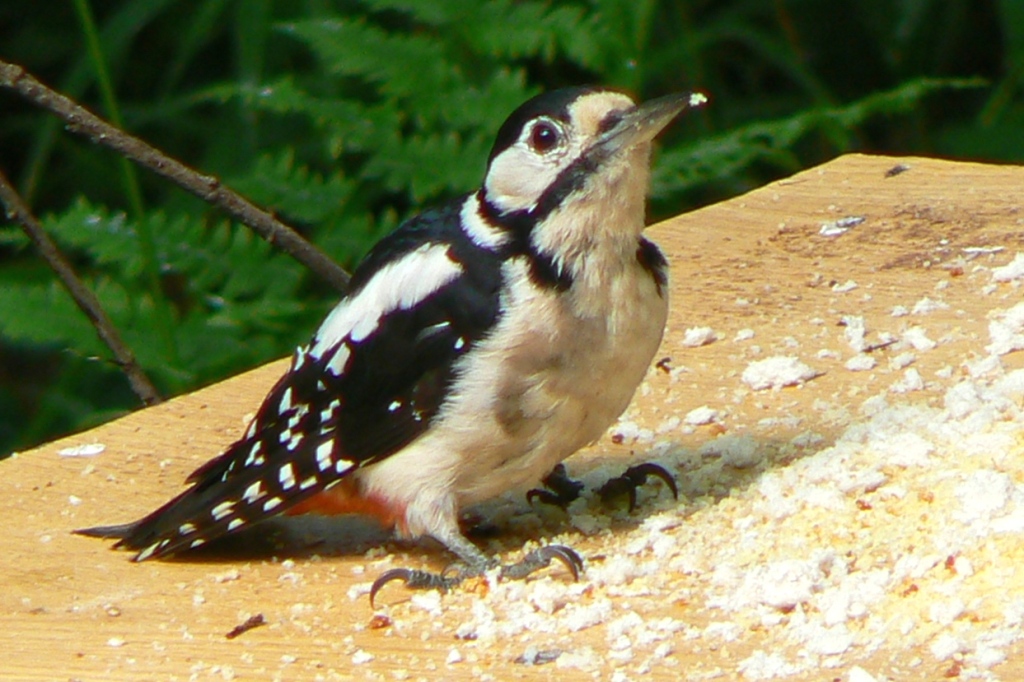


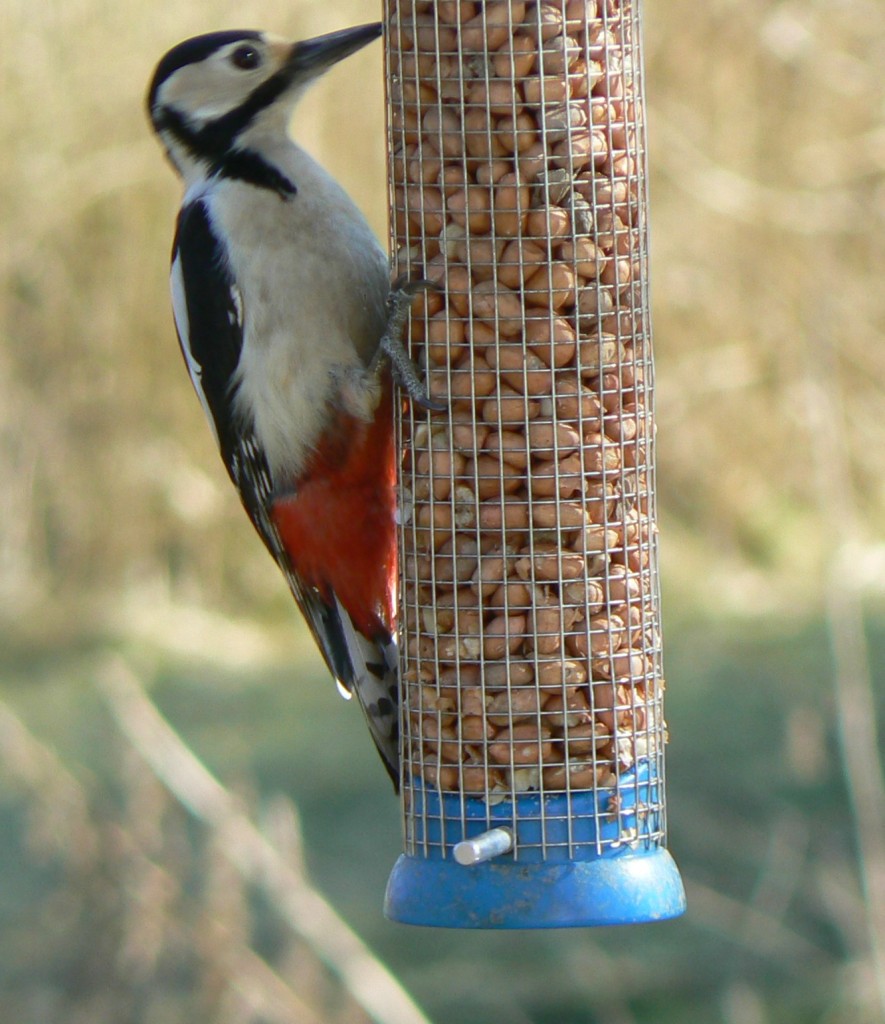
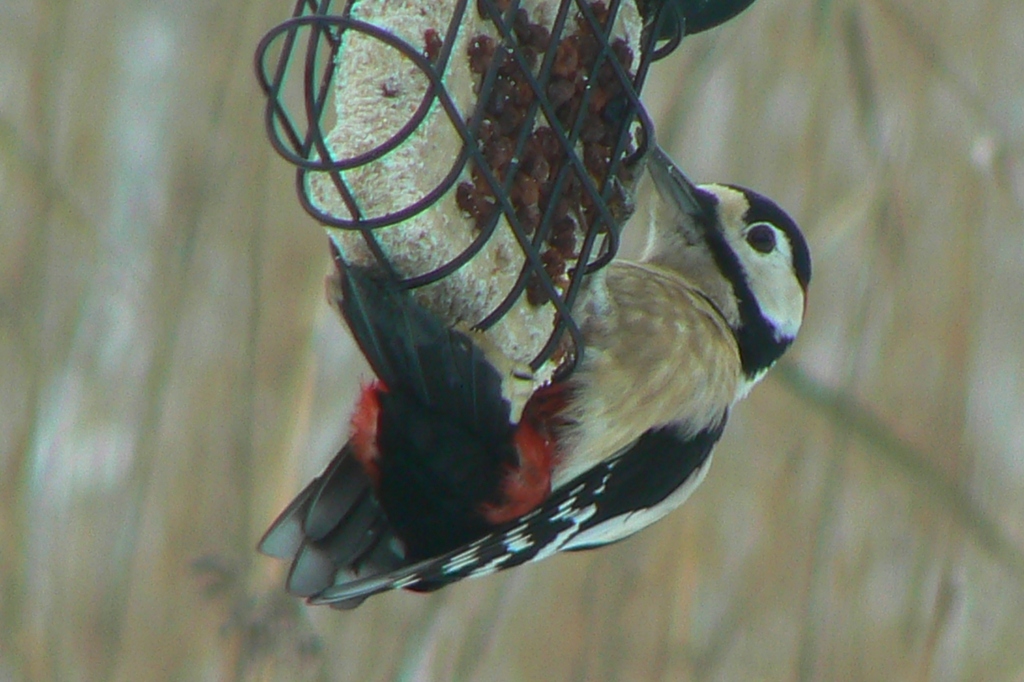
Green Woodpecker
Picus viridis comes from the other tribe, Picini. Some other species are called Green Woodpeckers so we could be precise and call it the European Green Woodpecker but we won’t.
It is noticeably larger that Dendrocopos major and has a plain brownish green back, with a yellow rump and red markings on its head.
The Green Woodpecker is much shyer than the Great Spotted Woodpecker and mostly feeds on ants, so it is likely to be seen on lawns or open low grasslands. You won’t ever see one near a bird feeder.
It does not often drum but its call is heard much more often. It has been called a yaffling sound and the bird is known colloquially as a Yaffle. It is, of course, the model for Professor Yaffle, the animated bookend character from Bagpuss.
Because it is so shy, I only have one picture, which is a juvenile bird, mottled and spotty all over.
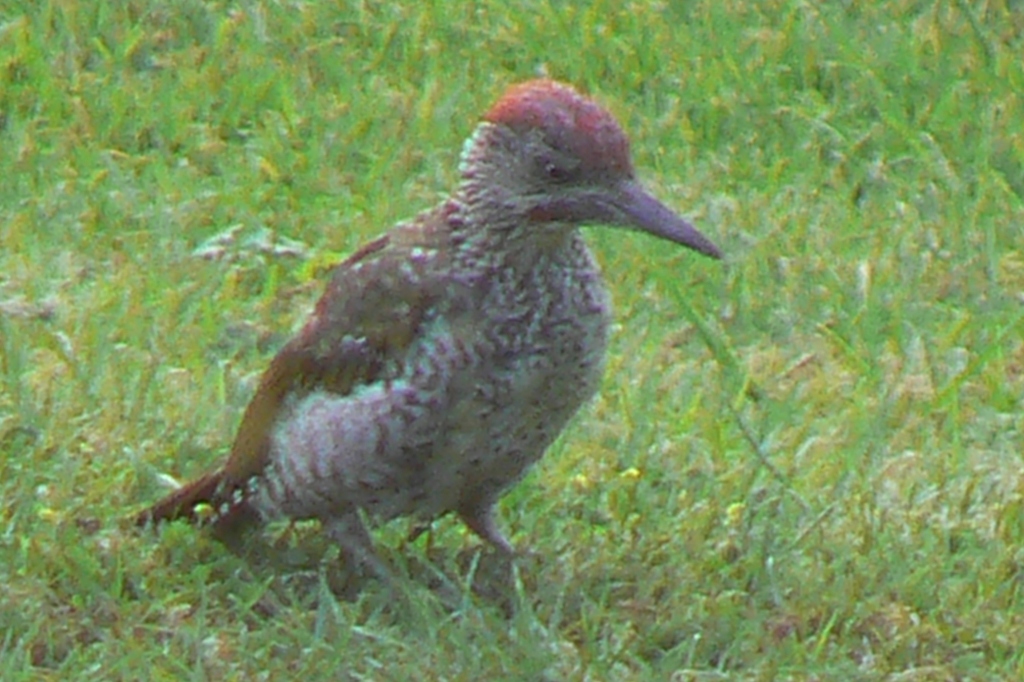
Other Notes
If you are out in the countryside you may hear a woodpecker – either the drumming of a Great Spotted Woodpecker or the yaffle of a Green Woodpecker. You can also recognize them by their distinctive flight, which is almost horizontal at tree height, a series of very flat U-shaped curves.
See also
The Lesser Spotted Woodpecker, similar but smaller, was until recently Dendrocopos minor but has been moved to Dryobates minor.
You may also see a Eurasian Wryneck, Jynx torquilla, as a summer visitor.
But don’t get excited. Both of these are very rare. In several years of birdwatching, I only once saw a Lesser Spotted Woodpecker by travelling to Norfolk and I have never seen a Wryneck.
